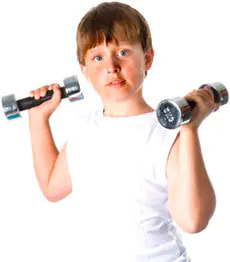In the educational and training process with schoolchildren high school and students The preparatory educational department uses special rehabilitation and preventive training. First of all, it is aimed at increasing the functional capabilities of boys and girls. As studies have shown, in terms of quantitative ratio, cardiovascular (CV) diseases occupy first place among all adolescent ailments and amount to 35.9%. It should be added to this that 83-85% of adolescents have unsatisfactory performance in functional tests. The main diseases of the cardiovascular system are:
- mitral valve prolapse (MVP), accounting for 47.1%,
- in second place is neurocirculatory dystonia (NCD) - 26.8%,
- in the third place - vegetative-vascular dystonia (VSD) - 17.9%.
Heart disease in teenagers
PMK is a disease that involves bulging of the heart valve leaflets when they close in the opposite direction. This condition can be observed when there is a defect in the structure of the special fibers that hold the valve leaflets. Under various pathological conditions, the tendon threads that operate the valve relax, become overstretched, and a condition called MVP occurs. The blood in the left ventricle of the heart is pushed into the aorta, and since this process occurs under pressure, the overstretched tendon threads are unable to keep the valve leaflets in proper tone and the valve seems to bend.
Teenage diseases VSD or NDC - combine various conditions that develop in young people as a result of disorders of the nervous regulation of vascular tone. VSD syndrome usually occurs after infectious diseases such as influenza, adenoviral infections, certain diseases of the nervous system and is characterized at the first stage by an increase (above 130 mm Hg) or decrease (less than 105-100 mm Hg) in blood pressure (BP). ), increased irritability and fatigue, decreased overall performance, sleep disturbance. These are the main signs of heart disease in adolescents.
There are systemic and regional VSDs. Systemic VSD or NCD proceed according to the hypertensive and/or hypotensive type.
The 2nd type of VSD is characterized by the hypotensive type of NCD. In this variant of cardiovascular disease in adolescents, arterial hypotension is characterized decrease in systolic pressure (often less than 100 mmHg), distolic pressure – (less than 60 mm Hg), weakness, malaise, headaches, dizziness, excessive fatigue, lethargy, drowsiness, a tendency to orthostatic reactions, fainting, and others are recorded.
VSD syndrome or NCD is a manifestation of cardiovascular neurosis associated with a disorder of the function of the nervous mechanisms of blood circulation regulation and resulting from general neurosis.
One of the first to react to muscle activity is the cardiovascular system, which naturally changes with adequate stimulation. Rationally built physical exercise contribute to a lasting transition to a state compensation and complete restoration functions of the cardiovascular system.
Diseases of the musculoskeletal system
The second most important focus of special rehabilitation and preventive training is related to ailments of the musculoskeletal system. 28.7% of students and schoolchildren have scoliosis. According to our observations, posture disorders among those studying in the preparatory educational department are observed in almost 80-85% of cases among female students and in 90-95% of male students.
The physical education program provides 120-140 hours per year to promote health, prevent illness in adolescents and motor improvement of schoolchildren and students. Of course, this time is not enough for high-quality motor training and especially for special restorative and preventive training, taking into account existing pathologies in health. Therefore, the tasks of special rehabilitation and preventive training are solved in the educational and training process when performing special individual lessons and, mainly, with additional independent studies according to a program developed by the teacher together with the teenager. If he does an additional 20-30 minutes of training three to four times a week, then this adds 80-100 hours per year to the mandatory training program and gives a significant improvement in the psychophysical state of health.
It is worth instilling in adolescents the need for independent physical activity gradually and consistently. For this purpose, the first sets of additional classes should not be long in time and heavy in volume of loads. As an example, a set of actual strength physical exercises should include 4-5 exercises, a running duration of 10-12 minutes, and so on, followed by a gradual increase in load.
If students regularly perform this complex for 40-45 days, then they should develop a program special rehabilitation and preventive training for additional independent studies.
Post Views: 105


